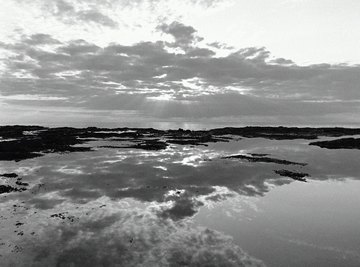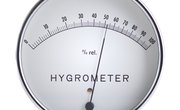
Water helps define the physical makeup of the Earth – not least considering it covers better than 70 percent of our planet’s surface – and is essential to all its life forms.
Water, after all, composes the bulk of the mass of most living things – about 65 percent of human beings, for example – and provides the medium by which nutrients are transported through the body and within which they’re transformed into energy or life-sustaining biological structures.
The water cycle, also known as the hydrologic cycle, describes the routes and processes by which this critical substance travels between land, ocean and atmosphere. The oceans and seas account for about 97 percent of all the water on the planet, fed primarily by terrestrial runoff and precipitation.
Several key water cycle steps – evaporation, condensation and precipitation – help ensure the proportionately scanty amount of moisture contained in freshwater is continually renewed.
Water Cycle Definition and Overview
The water cycle can be thought of as the movement of water in its solid, liquid and gaseous states between different global reservoirs. Less than one percent of the Earth’s water is actually actively moving through the water cycle at any given time.
Most is temporarily locked in “storage.” That refers to water residing in deep ocean waters, glacial ice, subterranean aquifers and other long-term reservoirs, which in some cases may hold water molecules for thousands or tens of thousands of years.
Only a tiny fraction of water exists outside of the oceanic system, and roughly three-quarters of that freshwater is frozen as glaciers and ice caps. About half a percent of Earth’s freshwater makes up groundwater, which is water within rock layers. Only about a quarter of a percent of freshwater is contained within lakes, rivers, the atmosphere and organisms.
Priming the Atmosphere with Water
Though there’s a minuscule amount transferred by storm surges and sea spray, evaporation is the main way by which ocean water is moved onto land to help replenish freshwater reservoirs. Evaporation is the transformation of liquid water into the gaseous form of water vapor.
Because they account for the majority of surface waters on the planet and because they dominate the warmer latitudes where high temperatures encourage high evaporation, oceans contribute more than 80 percent of the Earth’s total evaporated moisture.
The land, of course, accounts for the rest of the water vapor added to the atmosphere: not just via evaporation off surface waters, but also via transpiration, the water vapor given off by plants. Transpiration from forests can increase rainfall by supplying significant quantities of water vapor to the local atmosphere. This is an example – given trees require a certain minimum level of precipitation to grow – of a positive feedback loop.
The term evapotranspiration captures the combined effects of evaporation and transpiration. Much smaller amounts of water vapor are also contributed by other processes such as the respiration of animals and volcanic eruptions.
From Atmosphere to Land
Water evaporated or transpired into the atmosphere generally doesn’t stick around there very long: often merely hours or days. But needless to say its atmospheric residency is incredibly important from the standpoint of refueling the land-based portion of the water cycle.
Water vapor condenses into liquid droplets or sublimates to ice particles to form clouds when the airmass containing it cools sufficiently.
That can happen when the airmass rises: from the buoyancy created through solar heating (convection), for example, or when it’s shoved upwards by terrain or another airmass (along a frontal boundary). Humid maritime air masses laden with moisture evaporated off the oceans reach land by advection, the horizontal movement of air.
Water as Precipitation
When the droplets and ice particles in a cloud grow large and heavy enough, they fall as precipitation: rain, snow, freezing rain, hail, graupel, sleet and the like. This provides an input of water into the terrestrial system.
Precipitation is delivered very unequally around the Earth’s surface, which helps determine the layout of different ecosystems: deserts and semi-deserts on end of the moisture spectrum, rainforests and monsoon forests on the other.
The atmosphere doesn’t even need to generate precipitation to supply water to the land, either. Trees, for example, wring moisture from low-hanging or ground-hugging clouds by providing a surface for water condensation.
This fog drip can supply significant amounts of moisture to the soil. Air at ground level that cools overnight can also condense water on vegetation and other surfaces in the form of dew.
More Water Cycle Facts: The Routes and Residencies of Freshwater
Water that falls on the Earth’s land surface can take any number of different routes within the hydrological cycle. Much is funneled over the surface as runoff via overland flow, creeks and rivers to eventually shuttle into the ocean.
Water that pools in puddles on the ground, journeys into a lake or wetland or travels in a river channel can also return directly to the atmosphere via evaporation. Water can sublimate directly from the frozen form of snow and ice – glaciers and snowpacks – into the gas form of water vapor as well.
Instead of evaporating back into the atmosphere or getting channeled into drainages as runoff, water can also seep underground to become soil moisture – some of which will be drawn up in plant roots and later transpired – or go deeper into groundwater aquifers. Groundwater may remain within the rocks for a long period of time, but can also appear at the Earth’s surface in springs and seeps to be evaporated or transformed into runoff.
Snow falling on a mountain glacier or a polar ice cap, meanwhile, can be incorporated into its ice for extended residency. Finally, some freshwater, of course, becomes biological water by being taken in by plants, animals and other living things.
References
- United States Geological Survey: The Fundamentals of the Water Cycle
- National Oceanic and Atmospheric Administration: The Hydrologic Cycle
- Physical Geography: A Landscape Appreciation; Tom L. McKnight, Darrel Hess
- United States Geological Survey: How Much of the Earth's Water is Stored in Glaciers?
- Forest Ecosystems; David A. Perry, et al.
About the Author
Ethan Shaw is an independent naturalist and freelance outdoors/nature writer based in Oregon. He holds a B.S. in Wildlife Ecology and a graduate certificate in G.I.S. from the University of Wisconsin-Madison. His primary interests from both a fieldwork and writing perspective include landscape ecology, geomorphology, the classification of ecosystems, biogeography, wildlife/habitat relationships, and historical ecology. He’s written for a variety of outlets, including Earth Touch News, RootsRated, Backpacker, Terrain.org, and Atlas Obscura, and is presently working on a field guide.
Photo Credits
Photos.com/AbleStock.com/Getty Images
